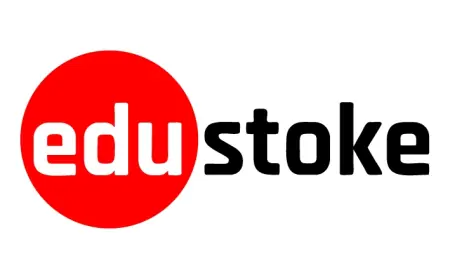Here’s What Really Affects Your Home Loan Approval
Planning a home loan? Check your eligibility, understand MSF rate influence, and discover ways to improve your chances of approval.

If you're planning to apply for a home loan, chances are you're already dreaming of that perfect property. But before you start browsing locations or interior design ideas, there’s one important detail to check—your home loan eligibility. This one factor could make or break your application, so understanding how it’s calculated can really help you prepare better.
Simply put, home loan eligibility is an estimate of how much you can borrow based on your income, credit history, financial obligations, and other personal details. But there’s more to it than just your salary. Market-linked factors like interest rates—shaped in part by indicators such as the marginal standing facility rate—also influence how much you're eligible to borrow. While these elements may sound technical, getting a grasp on them can give you the upper hand during the application process. So let’s break it all down and look at how eligibility is determined, what you can do to improve it, and how external factors like the current MSF rate may impact your journey.
What Determines Your Home Loan Eligibility?
Your Home Loan Eligibility isn’t a one-size-fits-all figure. Lenders look at a combination of income, existing liabilities, credit behaviour, and employment type.
Here’s a table outlining key factors:
|
Factor |
How It Affects Eligibility |
|---|---|
|
Net Monthly Income |
Higher income = higher eligibility |
|
Existing EMIs |
More liabilities = lower eligible amount |
|
Credit Score |
A score of 750+ generally improves approval chances |
|
Age and Tenure Preference |
Younger borrowers often qualify for longer tenures |
|
Employment Status |
Salaried or self-employed, consistency is key |
|
Type of Property |
Ready-to-move homes may attract different conditions |
While personal finances are crucial, home loan interest rate trends also play a part in deciding your EMI and the overall loan amount you can manage.
Understanding the Link Between MSF Rate and Home Loan Interest Rate
You may have heard of terms like the marginal standing facility rate or MSF rate in financial news. But how does it matter to you as a homebuyer?
In simple terms, this rate influences the cost at which financial institutions borrow money. When the current MSF rate changes, it often nudges the home loan interest rate up or down. And that directly affects your monthly EMI.
For example:
-
If the MSF rate is high, interest rates may follow—making loans slightly more expensive
-
If it drops, lenders might offer lower rates, increasing your eligibility due to reduced EMI estimates
This is why it's helpful to track market shifts before applying—better timing could mean more favourable loan terms.
Signs That You're Ready to Apply for a Home Loan
Wondering whether you're in a good position to apply? Here are a few indicators:
-
Your credit score is 750 or above
-
Your monthly EMI obligations are under 40% of your income
-
You've had stable employment for at least one year
-
You have all the necessary documents—ID proof, income proof, and property papers
-
You're aware of current lending trends and home loan interest rate options
If these apply to you, you’re likely in a strong place to apply—or just a few steps away from it.
Tips to Improve Home Loan Eligibility Before Applying
Even if you don’t tick every box yet, you can still take steps to boost your chances:
-
Reduce existing debts – Pay off personal loans or credit card balances
-
Add a co-applicant – Combine incomes with a spouse or parent
-
Choose a longer tenure – This reduces your monthly EMI and increases eligibility
-
Use an eligibility calculator – Estimate your borrowing capacity with current interest rates
-
Maintain steady financial records – Regular income and tax filing add to your profile strength
These small adjustments can go a long way when you’re working towards better home loan eligibility.
Documents You’ll Need for a Smooth Application
While the required list may vary slightly by lender, here’s a standard checklist:
-
PAN Card and Aadhaar Card
-
Recent salary slips or income tax returns
-
Bank statements (last 6 months)
-
Proof of employment or business
-
Property documents (agreement to sell, NOC, approved building plan)
Being prepared can speed up the approval process—and reduce unnecessary back-and-forth.
How Interest Rate Trends Can Shape Loan Affordability
It’s not just about whether you're eligible—but how much your loan will actually cost. Here's how home loan interest rate changes impact your repayment ability:
|
Scenario |
Impact on EMI and Eligibility |
|---|---|
|
Interest rates rise |
EMI increases, reducing the amount you can borrow |
|
Interest rates drop |
EMI lowers, increasing your eligible loan amount |
|
Fixed vs floating rates |
Fixed offers stability, floating may benefit in the long run |
This is why it’s wise to apply when interest rates are steady or dropping—keeping your future repayments easier to manage.
Summary – Home Loan Eligibility Is More Than Just a Number
Your home loan eligibility reflects both your financial health and current lending conditions. While your income, credit score, and job stability form the core of your eligibility profile, external indicators like the marginal standing facility rate, MSF rate, and current MSF rate influence how much you can comfortably borrow. By keeping an eye on market trends, maintaining a clean credit history, and using tools like eligibility calculators, you can maximise your chances of getting approved—and at the best possible terms. At the end of the day, understanding the bigger picture helps you take smarter steps toward homeownership.
What's Your Reaction?
 Like
0
Like
0
 Dislike
0
Dislike
0
 Love
0
Love
0
 Funny
0
Funny
0
 Angry
0
Angry
0
 Sad
0
Sad
0
 Wow
0
Wow
0























































